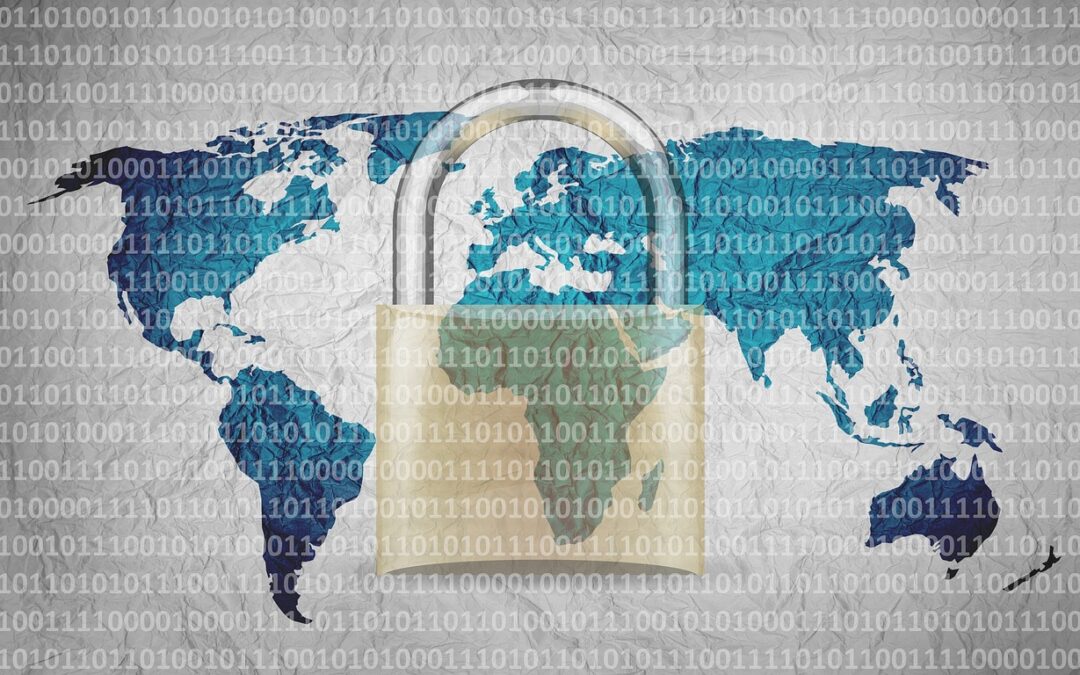Implementing business cybersecurity – the right way – has many more moving parts than simply installing antivirus software and running scans every once in a while. It’s not a responsibility to be taken lightly.
In today’s digital age, safeguarding your business or organization against common cyber threats is not just a prudent measure. It’s an absolute necessity. As cybercriminals continue to grow in strategy, tactics and tenacity, the importance of implementing robust business cybersecurity solutions cannot be overstated.
So what does it take to implement business cybersecurity at your organization? Let’s go over the playbook for bolstering your security posture to proactively avoid devastating and costly attacks. These insights are helpful, whether you’re tackling cybersecurity in-house or choosing a third-party vendor.
The Playbook for Ultimate Business Cybersecurity. 4 Steps to Get It Right.
Implementing business cybersecurity involves several crucial steps. Each plays a vital role in fortifying your defenses, safeguarding digital assets, and protecting your clients and staff who trust you with their confidential information.
1. Assess Your Current Cybersecurity Posture
Before taking action, begin with a comprehensive assessment of your organization’s existing cybersecurity measures. It’s imperative. You can’t fix what you don’t know is broken.
This initial step serves as the foundation upon which your tailored cybersecurity strategy can be built. During this assessment, you’ll identify the strengths and weaknesses of your current cybersecurity setup and pinpoint potential vulnerabilities that could be exploited by cybercriminals:
- Identifying Strengths: Current cybersecurity strengths might include well-implemented firewalls, regularly updated antivirus software, and staff members with knowledge of security best practices.
- Uncovering Weaknesses: Areas of vulnerability within your existing cybersecurity framework can include outdated software, inadequate employee training or insufficient access controls.
- Pinpointing Potential Vulnerabilities: Because cyber threats are continually evolving, anticipating potential attack vectors is essential for proactive defense.
- Data Analysis: Assess historical vulnerabilities and threat patterns that have targeted your organization before.
- Compliance Check: Ensure that your cybersecurity aligns with industry-specific regulatory requirements to protect sensitive data and avoid legal penalties.
- Resource Allocation: Gain a clearer understanding of where your organization needs to invest in terms of technology, training and personnel.
2. Customizing Solutions to Address Specific Vulnerabilities
The focus now shifts to customization. Managed cybersecurity solutions should be carefully tailored to address the specific vulnerabilities and risks identified during assessment. This level of customization ensures that your organization’s defenses are precisely aligned with its unique security needs. It’s not a one-size-fits-all approach, but rather a targeted strategy that hones in on your specific areas of concern.
Common cybersecurity threats span various industries and include some of the following (among numerous others):
- Phishing Scams: Widely prevalent, these deceive individuals into divulging sensitive information or clicking malicious links.
- Ransomware: A growing menace, ransomware encrypts critical data and demands a ransom for decryption.
- Data Breaches: Inadvertent or malicious exposure of sensitive information, compromising data integrity and confidentiality.
- Insider Threats: Employees or insiders intentionally or accidentally leaking sensitive data or conducting harmful activities within an organization.
- Distributed Denial of Service (DDoS) Attacks: DDoS attacks disrupt services by overwhelming networks or websites with excessive traffic, causing downtime and potential financial loss.
- Zero-Day Exploits: These target unknown vulnerabilities in software, making them particularly dangerous as no patches or defenses are available.
- Advanced Persistent Threats (APTs): Highly sophisticated and prolonged attacks, often state-sponsored, with the goal of compromising an organization’s network and remaining undetected for extended periods.
- Supply Chain Attacks: Cybercriminals target weak links in a supply chain to compromise systems and gain access to larger organizations.
3. Training Staff on Cybersecurity Best Practices
Cybersecurity is a collective effort, and education is at its core. In recent years, 80 percent of organizations worldwide have suffered one (or even more) data breaches from attacks attributed to a lack of employee knowledge.
Your organization’s security posture is significantly enhanced when your team is well-informed with the knowledge and skills to recognize and respond to threats effectively.
But one-and-done training isn’t enough. The threat landscape changes daily. Staff must be trained semi-regularly to keep up. Consider cybersecurity training an ongoing endeavor, ensuring that your staff remains vigilant in the face of evolving threats.
4. Establishing Ongoing Monitoring & Reporting
In the world of cybersecurity, complacency is not an option. Cyber threats are dynamic and continually evolving. Each industry faces distinct threats and challenges specific to how they operate.
Related reading:
- Managed Cybersecurity for Schools & Other Educational Institutions
- Strengthening the Thin Blue Line: How Managed Cybersecurity Helps Law Enforcement
- Data Protection for Banks & Other Financial Institutions
- 6 Managed IT Solutions for Healthcare Providers
Managed cybersecurity solutions provide the advantage of 24/7 monitoring and reporting. Your organization can benefit from real-time threat detection and immediate incident response capabilities.
Implementing Business Cybersecurity is an Essential Investment in Sustainable Protection of Your Organization’s Digital Footprint
Cybersecurity isn’t just about safeguarding data; it’s about preserving the trust of your customers, clients and stakeholders. Nothing damages an organization’s reputation more quickly than an attack that could’ve been prevented, resulting in substantial financial and/or intellectual property damage. It’s also about ensuring that your business operations remain uninterrupted without costly downtime for emergency responses, fixes and upgrades..
The long-term benefits of investing in cybersecurity extend far beyond immediate security. They encompass the preservation of sensitive information, the uninterrupted flow of business services, and compliance with data protection regulations. Businesses that embrace managed cybersecurity solutions stand as exemplars of responsible stewardship in the digital realm.
Implementing business cybersecurity is a multifaceted process that involves numerous steps. There’s no shame in asking for help. Call Acme Business at (716) 372-1325 and connect with us on LinkedIn. Our experts can create a specialized system to fit your unique cybersecurity needs


Recent Comments